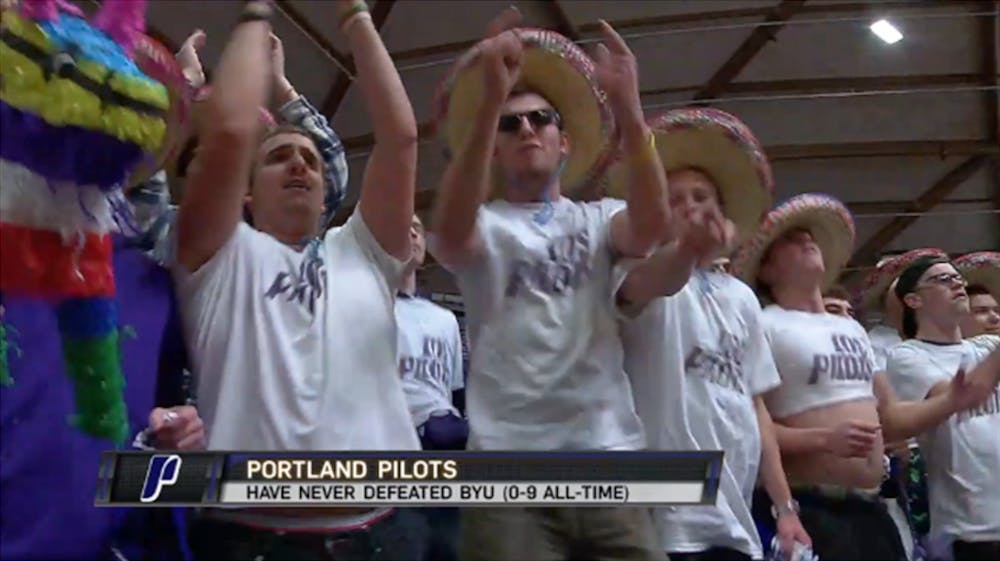Lydia Laythe |
Two weeks ago, students attended a UP men’s basketball game wearing sombreros and shouting rude and vulgar phrases in Spanish. This incident elicited responses from students, faculty and staff, as well as responses from University President Fr. Bill Beauchamp, the Athletic Department, Residence Life and ASUP. What began as one incident of cultural appropriation sparked campus-wide discussion on cultural sensitivity and long-term change.
President Beauchamp
In a letter addressed to UP Students, Faculty and Staff, University President Beauchamp expressed a desire to create a more safe, respectful and inclusive campus. According to Beauchamp, the new Presidential Advisory Committee on Inclusion will be addressing this issue.
“Our work in this area will never be complete, but we must remain committed to making sure that the University of Portland is a welcoming and respectful community for all who call The Bluff home,” Beauchamp said.
Athletic Department
According to a statement by Director of Athletics Scott Leykam, “the Athletic Department is finalizing a Fan Code of Conduct that will, in partnership with Residence Life, Student Activities and Public Safety, clearly articulate action steps to prevent and handle situations that may arise in the future.”
Residence Life
Chris Haug, director of Residence Life, spoke at the ASUP meeting Feb. 3 about changes in residence life, including the possible implementation of Residence Hall Ambassadors. These ambassadors would operate as leaders in residence halls and help facilitate intellectual, spiritual and cultural conversations outside the classroom. One would focus on diversity.
“We just went through a painful situation a week and a half ago with the ‘Los Pilots’ incident at the Chiles Center,” Haug said at the meeting, “Not that the Global Ambassador position could’ve solved any of that. But wouldn’t it have been cool if we already had that venue for conversation? Maybe a student leader (could have) already networked with people of different cultures and pulled together a cultural conversation.”
ASUP
ASUP senators Anthony Montoya and Samantha DeLucchi co-sponsored Resolution 14-02 which proposes splitting the ASUP Awareness Committee into two separate committees. Currently the Awareness Committee is comprised of two subcommittees, one focusing on diversity. Resolution 14-02 would make those subcommittees into standing committees, which insures the topic of diversity be discussed more often. DeLucchi is also pushing the expansion of leadership roles in the diversity committee to allow non-international students to head that committee. Montoya said the leadership expansion was reflective of the expansion in their definition of diversity.
“We’re expanding the definition of the (diversity) committee to not just include ethnicity or national origin, but all matters of diversity including homosexuality and gender identity,” Montoya said.
Beyond internal changes, ASUP is also putting time and energy into external efforts toward diversity awareness. DeLucchi is planning an event for Diversity Dialogues Week Feb. 24-28, which would consist of a panel of students discussing their experience of diversity and adversity. In addition, Vice President Elvia Gaona will attend the upcoming Academic Senate meeting Feb. 11 to discuss including diversity as a topic in the curriculum and to receive faculty and staff feedback.
Student, Faculty and Staff Group
Multicultural Programs Coordinator Bethany Sills is helping facilitate meetings between students, faculty and staff. The newly-formed group began meeting to address the initial cultural insensitivity issue, but has now shifted its focus to maintaining the cultural dialogue on campus. While the group is still in the brainstorming phase, they’ve considered developing cultural competence training models for freshman orientation, freshman home base groups, residence halls and campus clubs. This group is also considering hosting a panel during Diversity Dialogues Week, possibly in collaboration with ASUP. Anyone can join the group by contacting Bethany Sills at sills@up.edu.
Overall, this group aims to shift focus from one incident and look at the bigger picture. Their goal is to continue the dialogue about diversity and inclusion on campus.
Junior Yuri Hernandez, one of the students who confronted the group wearing sombreros, said the group is also focusing on educating students, faculty and staff. Hernandez said educating people in cultural sensitivity involves challenging their ideas in ways they may have never been challenged before.
“I think it’s because they’ve never had to analyze their privilege,” Hernandez said. “They don’t see it as racist because they get to choose not to. They’ve never been challenged to think like that.”
Senior Tadeu Velloso, another member of the group, said everyone needs to refocus their questions about the issue of cultural awareness and sensitivity.
“It started a lot of conversation, which is ultimately the goal,” Velloso said. “That’s the thing that’s frustrating is people being like, ‘Well if that’s cultural appropriation, what about the fact that Villa Maria wears the kilts? Or what about if Mexican students wear sombreros?’ People want a definition about where is the line. There is no line unfortunately. There is no right or wrong answer. There is no line. The line is defined by the person that’s offended.”








